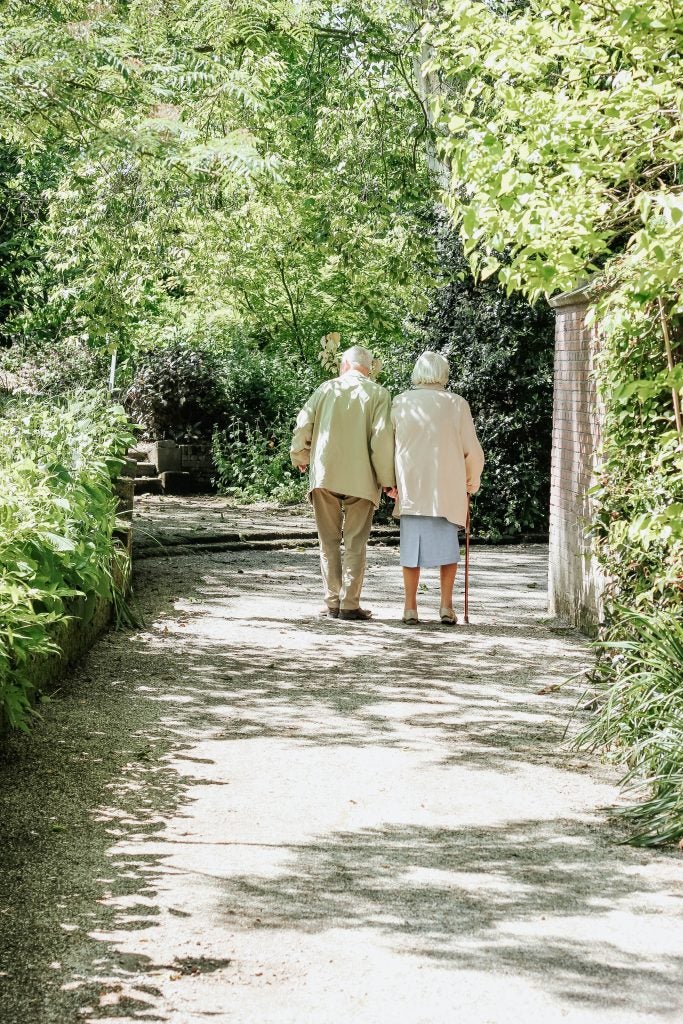
Love and attachment often go hand in hand, but they are different nonetheless. There are many different theories that attempt to understand and explain what humans know as love. Attachment is defined as the feeling of being emotionally close to someone and is often a major component of love. There are both healthy and unhealthy forms of love and attachment and people often mistake attachment for love. Understanding these feelings and finding a healthy balance between the two can help people form and maintain fulfilling, happy relationships.
Table of Contents
Love
There are many different theories that categorize love into different stages or types. This article will consider several models of love: the triangular theory, the attachment theory, and the theory of passionate love. We will also consider the neuroanatomy and neurochemistry of love.
The Triangular Theory of Love
Robert Sternberg formulated a triangle theory of love by breaking it down into different categories. According to Sternberg’s triangular theory of love, there exist three main cornerstones: intimacy, passion, and commitment. In his theory, each of these parts must match up in order for satisfying relationships to develop.
- Intimacy: This is the emotional component of love. In other words, it is the part of love that makes one feel close to their partner. It involves feelings of trust, security, and self-disclosure. Intimacy develops over time as people get to know each other better, as it involves a sense of mutual understanding with the loved one. Intimate love makes one feel comfortable with their partner and allows one to open up to them. Intimacy can be present in many relationships besides romantic ones. For example, the emotional closeness that comes with intimacy can be found in relationships between close friends and between parents and children.
- Passion: This is the motivational component of love. Passion is the feeling of being physically attracted to a partner. It often involves a physiological reaction, such as becoming aroused. It can also make one want to be near their partner all the time, or make them think about their partner frequently. Passion is the feeling of always wanting to be near your partner and always thinking about them. Passion is the component of love that usually characterizes the first stages of a relationship and is often the component that fades most quickly in the course of a long-term relationship. Passion can be similar to infatuation or lust and can be expressed in many ways including sexually or romantically.
- Decision or Commitment: This is the cognitive component of love. Commitment is the decision one makes to be loyal and faithful to their partner in many ways. It involves openly and honestly deciding that both partners want to develop and maintain a satisfying and lasting relationship. This involves planning for the future, working out problems, and consciously avoiding doing things that may hurt your partner. Commitment is what makes relationships last.
Sternberg’s theory is called a triangular theory of love because it involves the three components of love discussed above organized into a triangle.

One can use this triangle to show when two partners are mismatched in the love they feel towards one another. Sternberg’s research has shown that when there is a good match between the two partners’ love, they feel satisfied with the relationship. Mismatches arise when certain components of love prevail over others. Intimacy, love, and attachment are not always balanced in relationships. Sometimes they may never be balanced, and in other cases, the couple may simple need time to develop their relationship. For example, in some cases, as emotional intimacy between two people grows, passion may follow, and commitment may develop last. There are also cases where passion and intimacy are completely separate, as is the case in casual sex or hookups, where passion is present but intimacy is not. All three are needed for a good, lasting relationship.
Attachment Theory of Love

Attachment is a very important part of the human experience. The earliest attachment that humans experience is between infant and parent. One hypothesis is that the quality of this early attachment can have profound effects on a person, and can particularly affect one’s capacity to form loving attachments to others as an adult. This hypothesis leads way to the attachment theory of love. This theory can help lovers understand that the conflict in their relationship may be caused by a mismatch in attachment styles. Couples in different categories of attachment differ in the way they experience love and intimacy. Researchers have identified three attachment styles and have studied how couples in these categories react to conflicts. The three categories include the following: secure, anxious-ambivalent, and avoidant. Attachment styles influence the way people give and receive support.
- Secure: Securely attached couples have high self-esteem and do not fear closeness. They enjoy feelings of love and they trust their partner’s displays of love. They are usually willing to change their own behaviors and overlook their partner’s faults. 3 People in this category of attachment feel comfortable depending on others and having others depend on them. One major benefit of a securely attached relationship is that couples deal with conflicts constructively.3 They tend to see conflict as an opportunity to communicate and share their feelings. Resolving a conflict can strengthen their confidence in their partner and in the relationship. This sort of attachment is very healthy in a relationship and usually brings the couple closer together. Research has shown that partners with a secure style report the greatest commitment to and satisfaction with their relationships.
- Avoidant: Individuals in the avoidant category are fearful of emotional dependency which can limit their ability to develop intimate relationships.2 In times of conflict, avoidant people do not show distress or anger during the interaction; they are more prone to turning to passive-aggressive behaviors. These, in turn, can lead to feelings of anger and resentment for both partners. After a conflict, these individuals are more likely to see their relationship as less close. Avoidant individuals do not or rarely look for help or support from their partner. In fact, avoidant partners may alienate helpers due to their own possessive, dependent, or controlling ways.2 This sort of attachment can be potentially dangerous to the relationship.
- Anxious-Ambivalent: Anxious-ambivalent attachment usually leads to jealous forms of love. People in this category tend to have low levels of trust and interdependence, and they are usually less satisfied with their relationship than are securely attached partners. Since they feel an excessive desire to merge with their partner, they tend to be “clingy, suspicious, dependent, jealous, controlling and even at times domineering.” 2 They tend to worry excessively that their partner does not love them or is going to leave them; therefore, they feel underappreciated and see others as undependable. Any conflict with their partner can make them feel more anxious and stressed. Due to their fears of loss and abandonment, discussing relationship problems can be difficult for them. Conflict usually brings about doubts and negativity about the relationship or the partner. Furthermore, after a fight they see the relationship as having less love and commitment. In coping with such feelings, they try to prepare themselves for the loss of the relationship by belittling their partner. This is a type of attachment that can drive people away from each other and potentially put an end to the relationship.
Research shows that 53% of adults are secure, 26% are avoidant, and 20% are anxious-ambivalent. It has been shown that separation from a parent during childhood, possibly from divorce or death, is not related to attachment styles. However, a person’s perception of the quality of the relationship with each of their parents was correlated to their attachment styles. Adults bring to any particular relationship their personal history of love and attachment. Attachment theory suggests similarity in attachment style is very important in a relationship and it can also provide explanations for why some couples experience jealousy.
Passionate and Compassionate Love
This perspective of love differentiates between two kinds of love: passionate love and companionate love. Passionate love can be defined as a state of intense longing for one’s partner and very often comes with an intense sexual desire. This in turn results in a desire to spend a lot of time with that partner. Passionate love also brings partners to take care of each other and to make a strong effort to maintain physical closeness. For many, passionate love can be overwhelming as their partner is constantly on their mind and is a short-term example of attachment. Compassionate love makes one preoccupied with their loved one, and they often idealize that person or the relationship. Companionate love differs because it is a feeling of deep attachment and often includes a strong commitment to one’s lover. Usually, passionate love is the first stage of a romantic relationship and as the relationship progresses, there is a gradual shift towards companionate love. When one experiences companionate love, they feel a more permanent form of attachment towards their lover. Helen Fisher predicts that there are three different phases of love in the brain. According to Fisher, these phases of love can be felt for the same person at the same time, or they can be experienced completely independently from one another for different people.4 Fisher calls the three components of love lust, romantic/passionate love, and attachment:

- Lust: Lust is also known as the human sex drive evolved to get humans looking for a variety of different potential partners. Lust is the type of love that one feels when they see a good-looking person walk by, or when they “fall in love at first sight,” with the way someone looks. The physical wanting or liking of another person usually characterizes lust. You can be in lust with someone before you even have a conversation with them. Lust is simply the physical attraction that we feel for someone.
- Romantic/Passionate Love: This involves the infatuation for and focus on another person, when this other person takes on special meaning, and one’s thoughts become obsessive about them. Romantic love is the feeling that most people would associate with falling in love with a person or being in love during the honeymoon stage of the relationship.
- Attachment: Anxiety occurs when anxiety has subsided and when a deep connection with their partner can be felt, creating a lifelong bond. Attachment is usually found in couples who have been together for a longer period of time, who have a deep understanding of one another, and see each other as life partners. Attachment can also be felt for one’s parents, children, family, or friends.
Attachment

Attachment, defined as a connection or feeling of being emotionally close to someone, is a major component of love. 1 People have a built-in tendency to be attached to others emotionally from infancy. Attachment can be defined as a psychological bond that forms between an infant and the mother, the father, or other caregiver. This bond begins in the hours immediately following birth and continues throughout infancy. Later, attachments begin to form with other familiar people. These attachments are peoples’ earliest experiences with both love and attachment and can in turn have significant effects on their abilities to later form sexual and emotional relationships in adulthood. Some studies have also shown that pregnancy can, in part, be seen as a psychological preparation for motherhood because of the development of the mother’s attachment to the infant during the nine months of pregnancy.
While one can be attached to someone or something and not be in love with the object of attachment, love sometimes cannot exist without attachment, as shown by the attachment theory of love. The word attachment brings about fear in some individuals because it sounds like one is exclusively dependent on or constantly in need of another person. For example, many forms of jealousy in relationships arise from attachment. People are attached to their current relationship and jealousy occurs when negative thoughts and feelings about the loss of a relationship start to arise. However, there are healthy kinds of attachment that are a necessary part of a loving relationship. Companionate love often involves commitment and a long-term attachment to one’s partner. Healthy attachments can provide a sense of safety and reduce anxiety or stress.
Biology of Love and Attachment

There are also many biological factors that cause people to feel attachment towards their sexual and/or romantic partners. Oxytocin is a chemical found in the brain that produces feelings of pleasure and satisfaction and activates the reward center of the brain – the same center of the brain that is activated by addictive drugs. This in turn can cause humans to feel attachment to the source of this pleasure, the same way one becomes addicted to the effects of a drug. In humans, oxytocin is stimulated by touch, including sexual touching and orgasm. Levels of interpersonal trust correlate positively with oxytocin. Oxytocin is typically released in greater amounts in females’ brains than males’, which can help explain why women may feel more negative feelings than men do after one-night stand hookups, although there are many other important factors, such as the double standard that exists in hookup culture or the “orgasm gap” between men and women in these types of sexual encounters. MRI studies have found that love activates the areas of the brain associated with motivation, reward, and euphoria. Both passionate love and sexual desire activate the same reward-related areas in the human brain although love was found to be associated with reduced activity in certain other parts of the brain. The neurological effects of sex and love on the human brain help explain the attachment people feel towards their lovers and sexual partners. It also shows why sex, love, and attachment are often intertwined despite also being very distinct from one another.
References
- Miracle, Tina S., Andrew W. Miracle, and Roy F. Baumeister. Human sexuality: Meeting your basic needs. Prentice Hall, 2003.
- Simpson, Jeffry A., and William Steven Rholes, eds. Attachment theory and close relationships. Guilford Press, 1998.
- Smith, Eliot R, and Diane M. Mackie. Social Psychology. Philadelphia: Psychology Press, 2000. Print.
- Fisher, Helen. Why we love: The nature and chemistry of romantic love. Macmillan, 2004.
- Sternberg, Robert J. “A triangular theory of love.” Psychological review 93.2 (1986): 119.
Last Updated: 28 February 2018.
